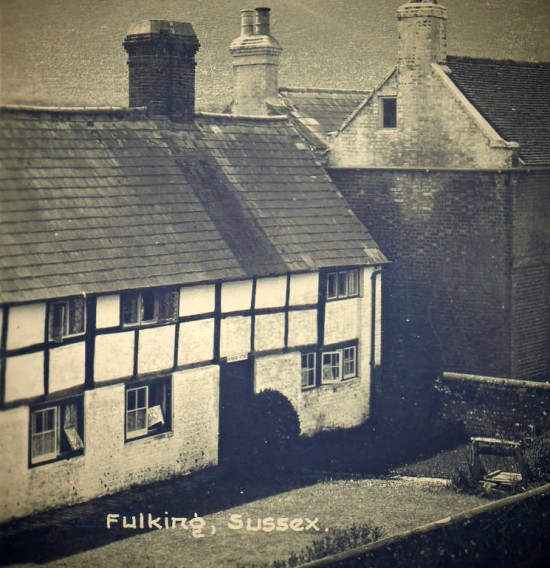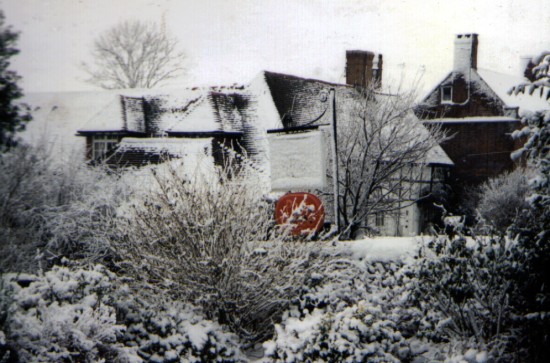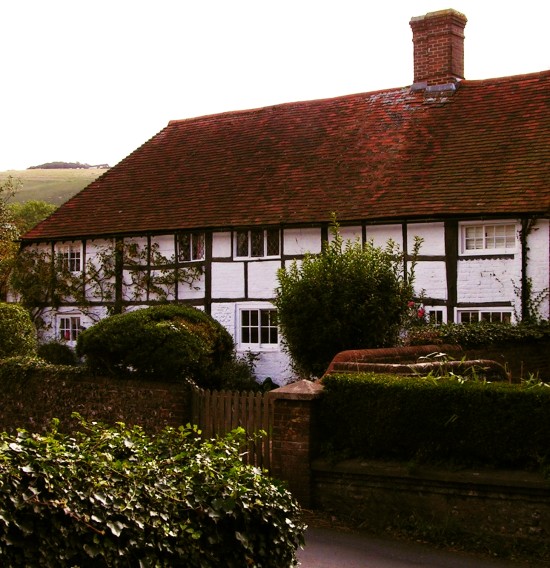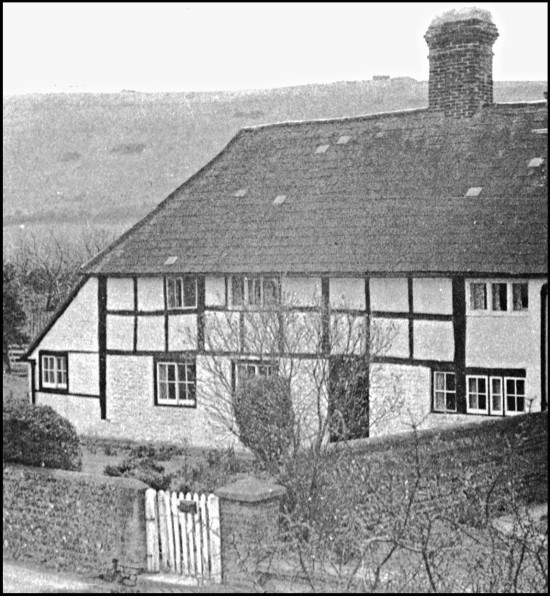
Arbor Vitae in the early 1900s (from an old postcard): note the well that can be seen in the front garden to the right of the picture.
C17 or earlier timber-framed building with painted brick infilling, ground floor brick infilling, ground floor rebuilt in flints, now also painted. Tiled roof. Casement windows, those on first floor with diamond-shaped panes. Two storeys. Four windows.
The original building was three rooms wide, an unusual configuration for a cottage. It is of half-timbered construction and, for most of its existence, would have been painted in the traditional manner with the walls lime washed and the timbers picked out in black tar. To this day, some of the windows still have old glass set in diamond shaped leaded panes.
At the beginning of the 20th century, George Stephen Cane Cuttress owned and operated the brewery at Poynings. He also owned various properties in Fulking, including Arbor Vitae which he sold at auction in 1914. The bill of sale described it as one cottage with its own well, let to George Beard for an annual rent of £15. George Beard was a member of a family who had lived in the parish of Edburton for many decades. He was the uncle of William Beard who emigrated to Australia in 1909.

A photograph of Arbor Vitae in the winter of 1991 taken by Stuart Howgrave-Graham. The dormer windows added in the 1980s by Peter Sheppard can be seen to the left of the red Post Office sign.
Whilst he was living at Arbor Vitae, Peter Sheppard began experimenting with plastic mouldings. He almost smoked out The Street when the machine he was using overheated. He sold the house to Derek Lintott and his wife Josephine (Jo). Derek was a surveyor and for a while was Chairman of the Parish Council. Jo was a professional calligrapher who worked mainly at home in the studio at the end of the garden. She also appeared in a BBC Television programme featuring Sussex village life. While she was resident in Fulking she lead a successful campaign to persuade BT not to remove the traditional, red K6 telephone box from The Street and replace it with a more up to date, but totally incongruous, metal and glass booth. The telephone box that she sucessfully fought to save itself became a Grade II listed building in 1988.

Arbor Vitae in 2007: comparison with the 1950s photo above reveals how the later two-storey extension has seamlessly replaced a single storey lean-to.
Reference
- F.A. Howe (1958) A Chronicle of Edburton and Fulking in the County of Sussex. Crawley: Hubners Ltd.
[Copyright © 2014, Anthony R. Brooks. Adapted from Anthony R. Brooks (2008) The Changing Times of Fulking & Edburton. Chichester: RPM Print & Design, pages 168-169, 245-246.]

